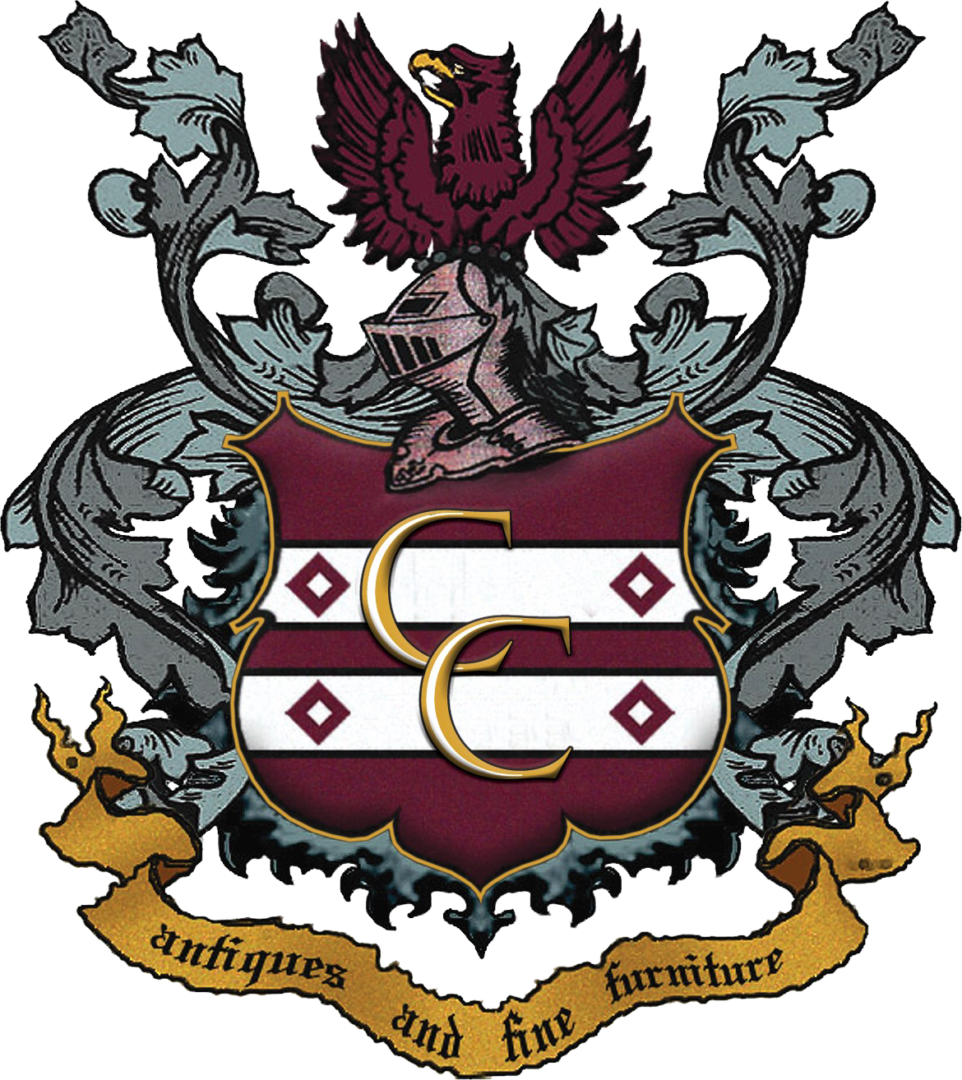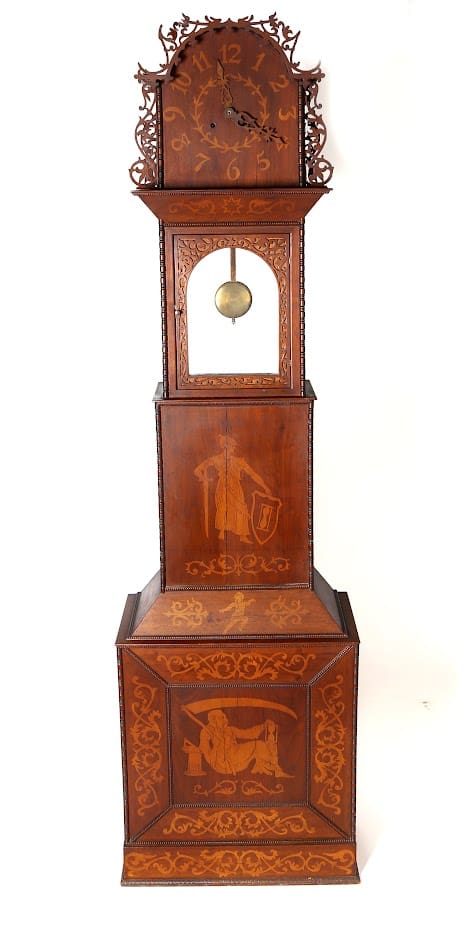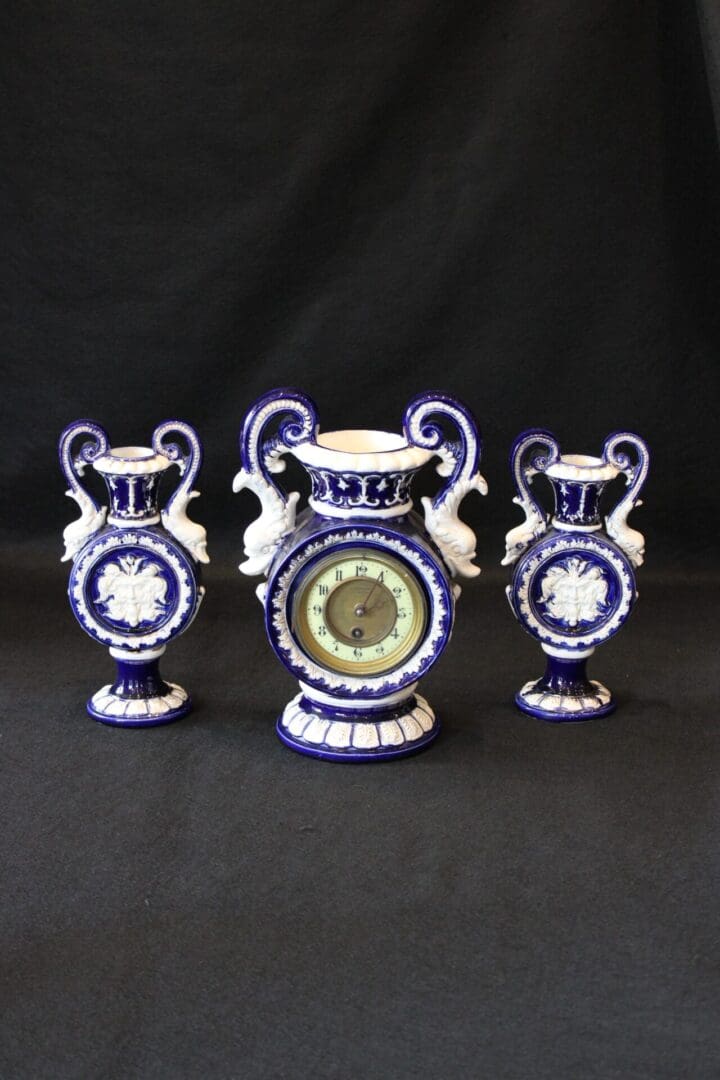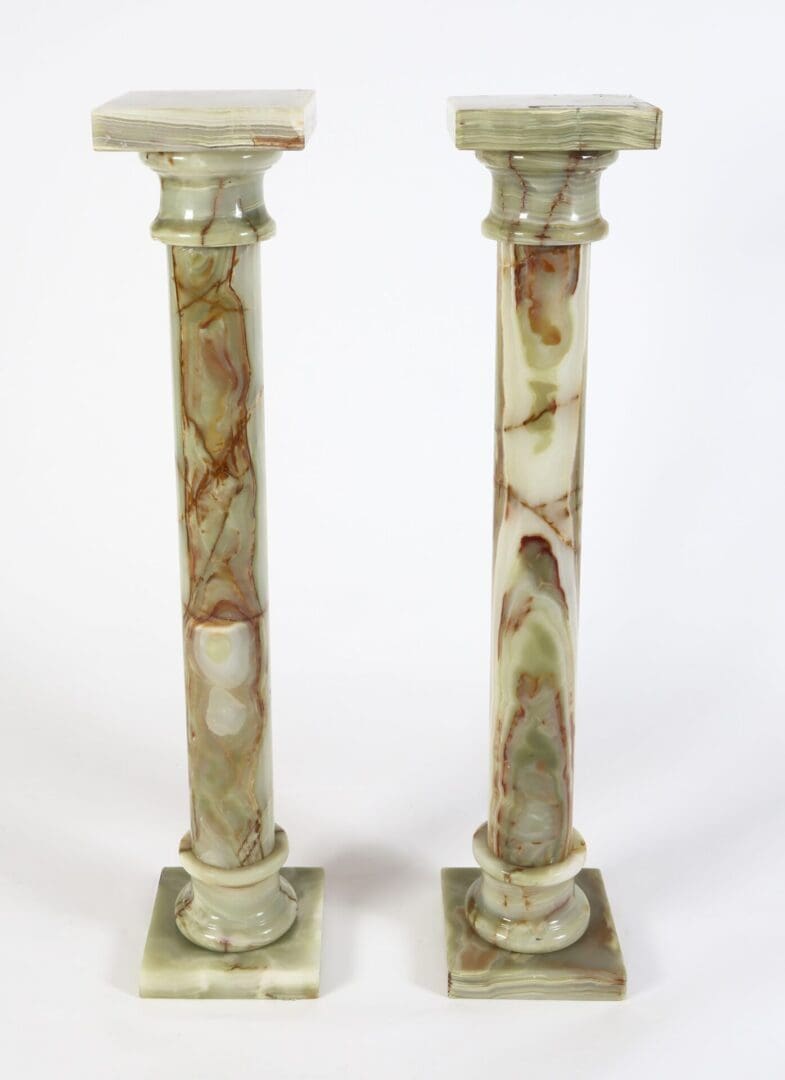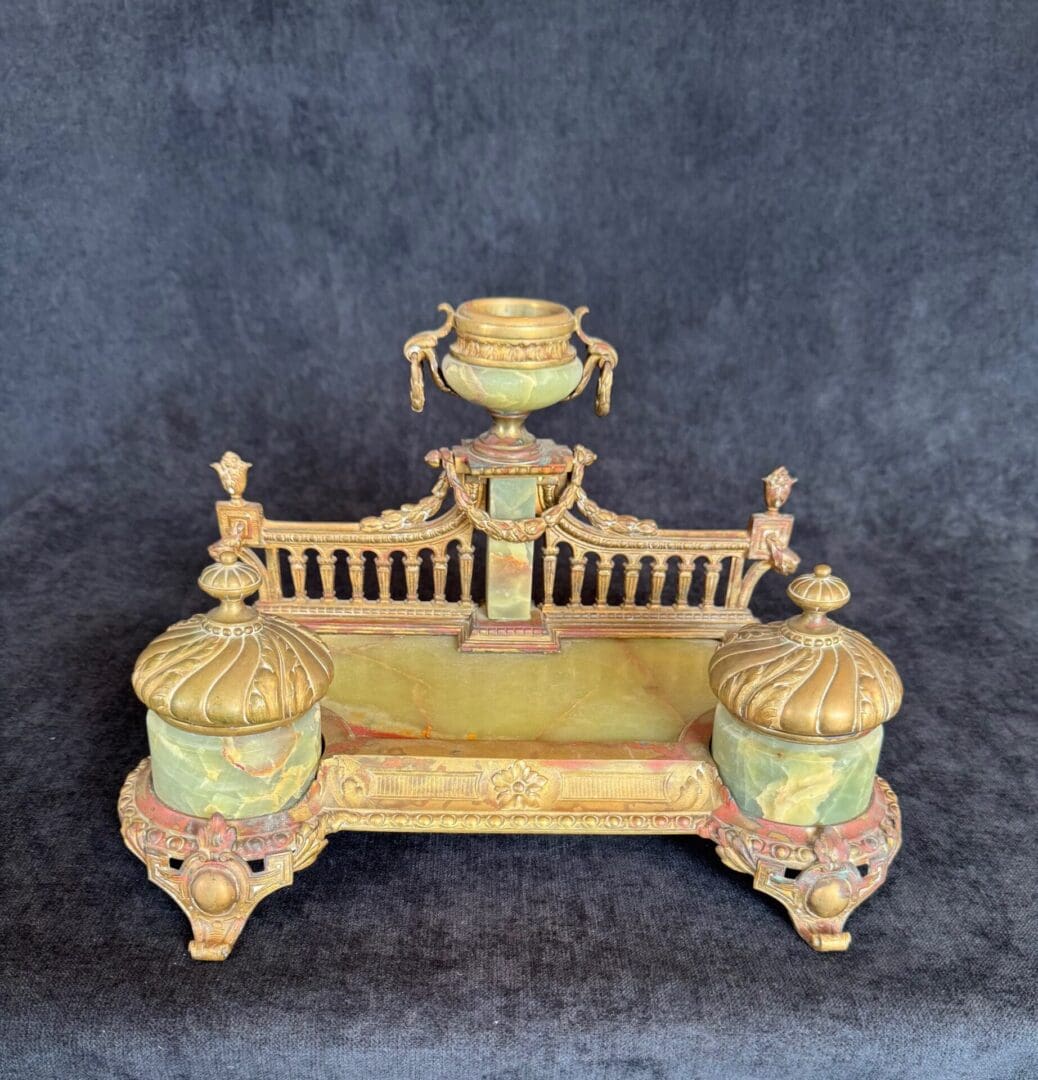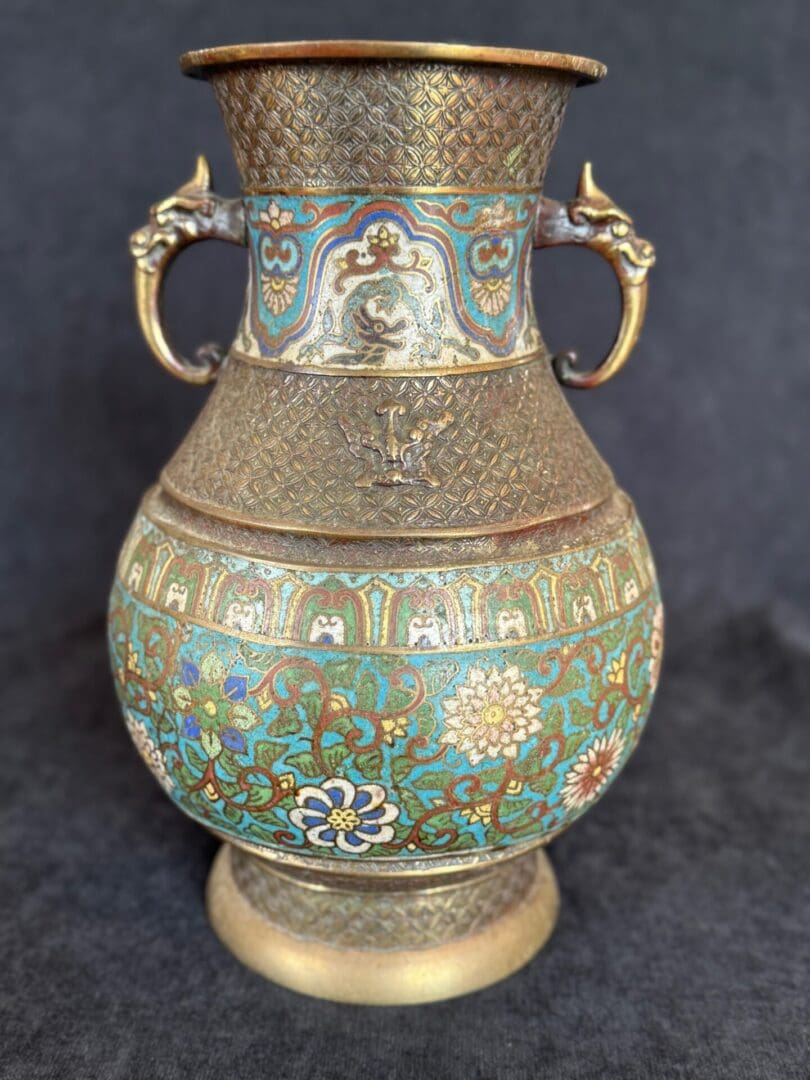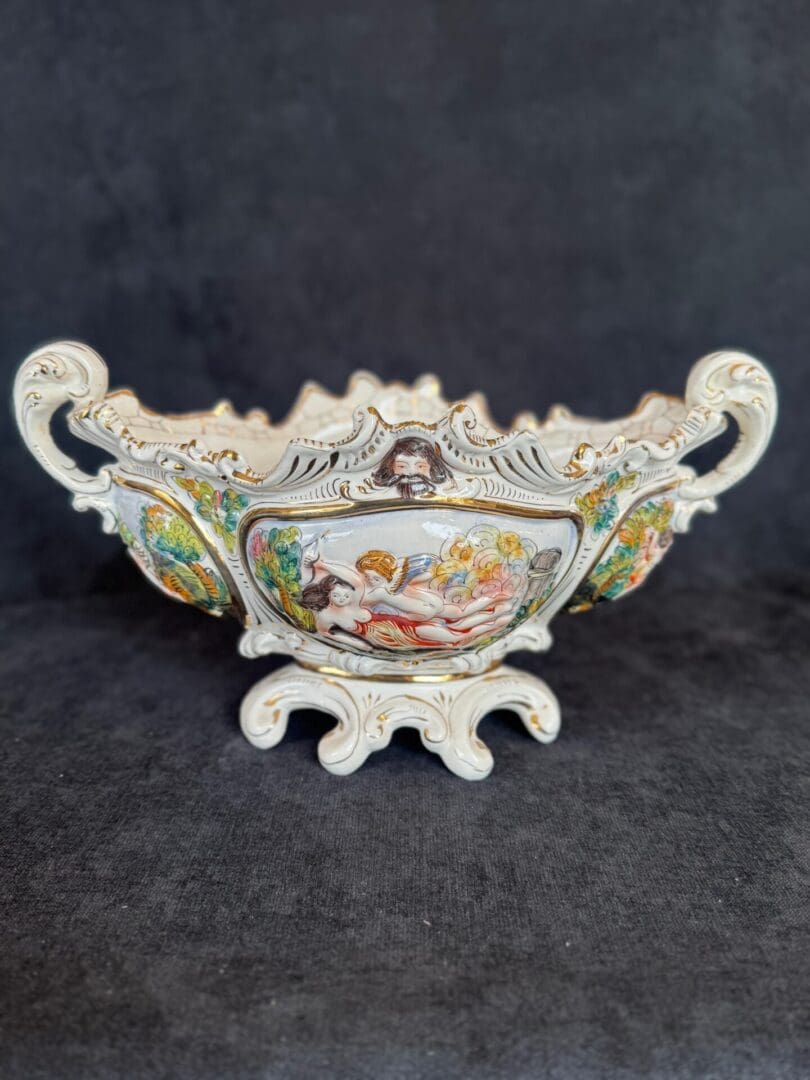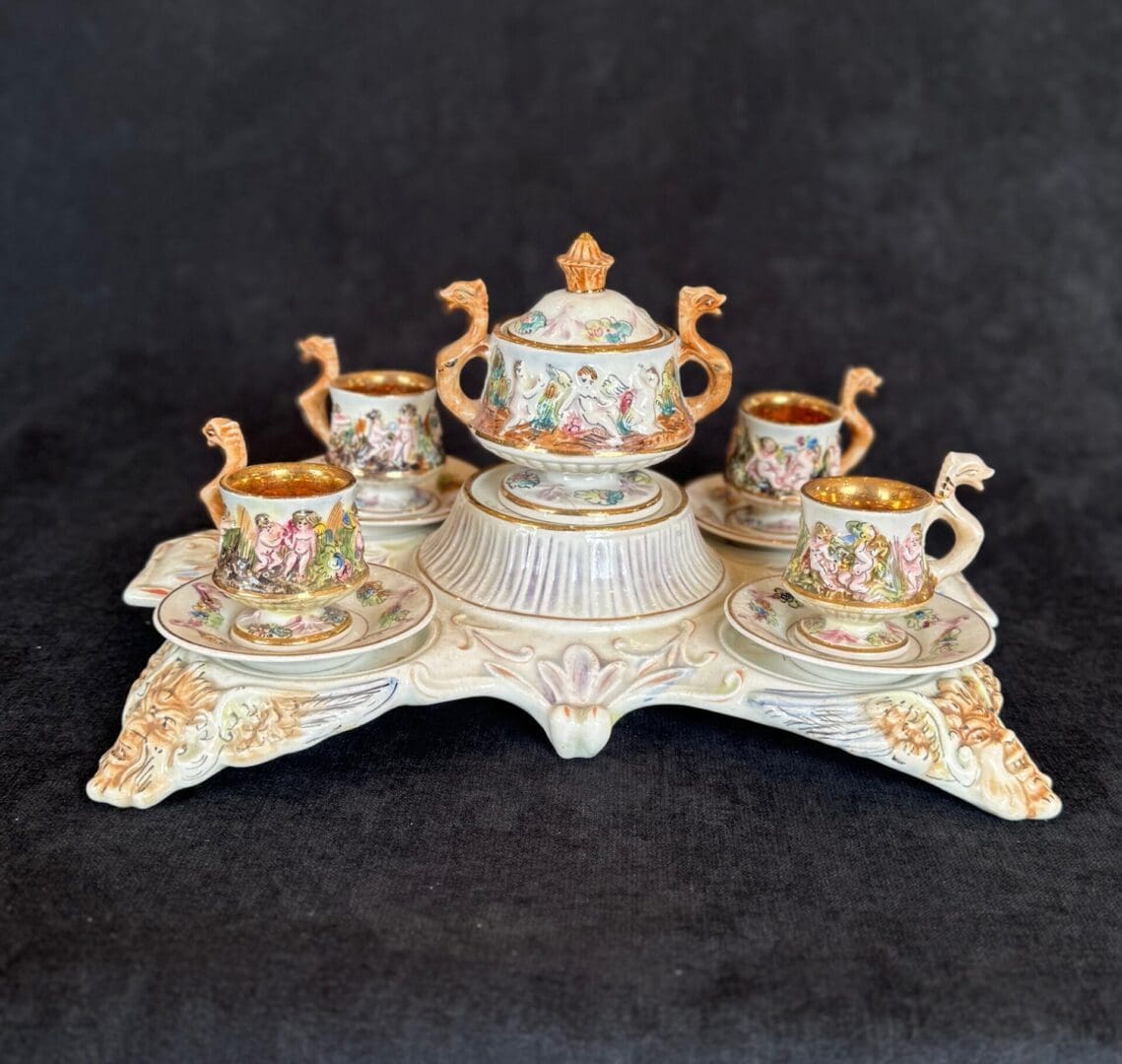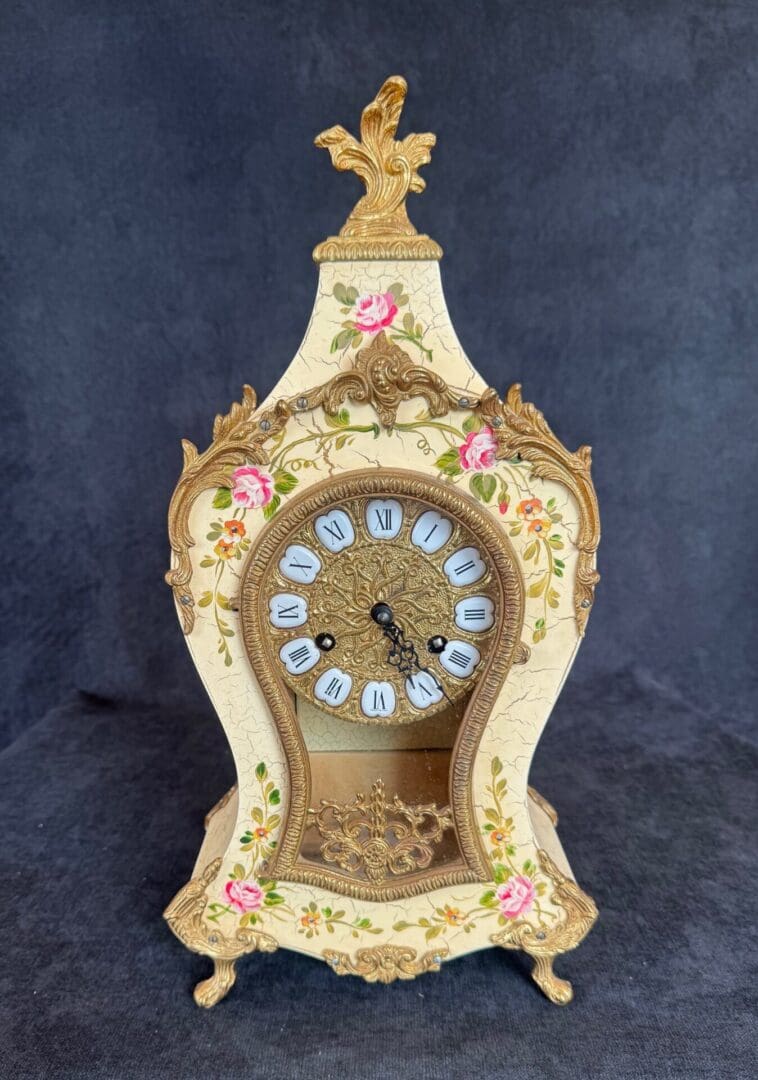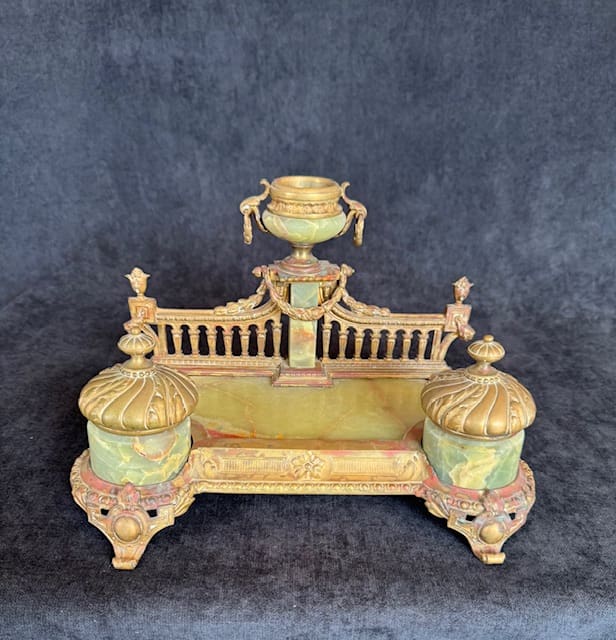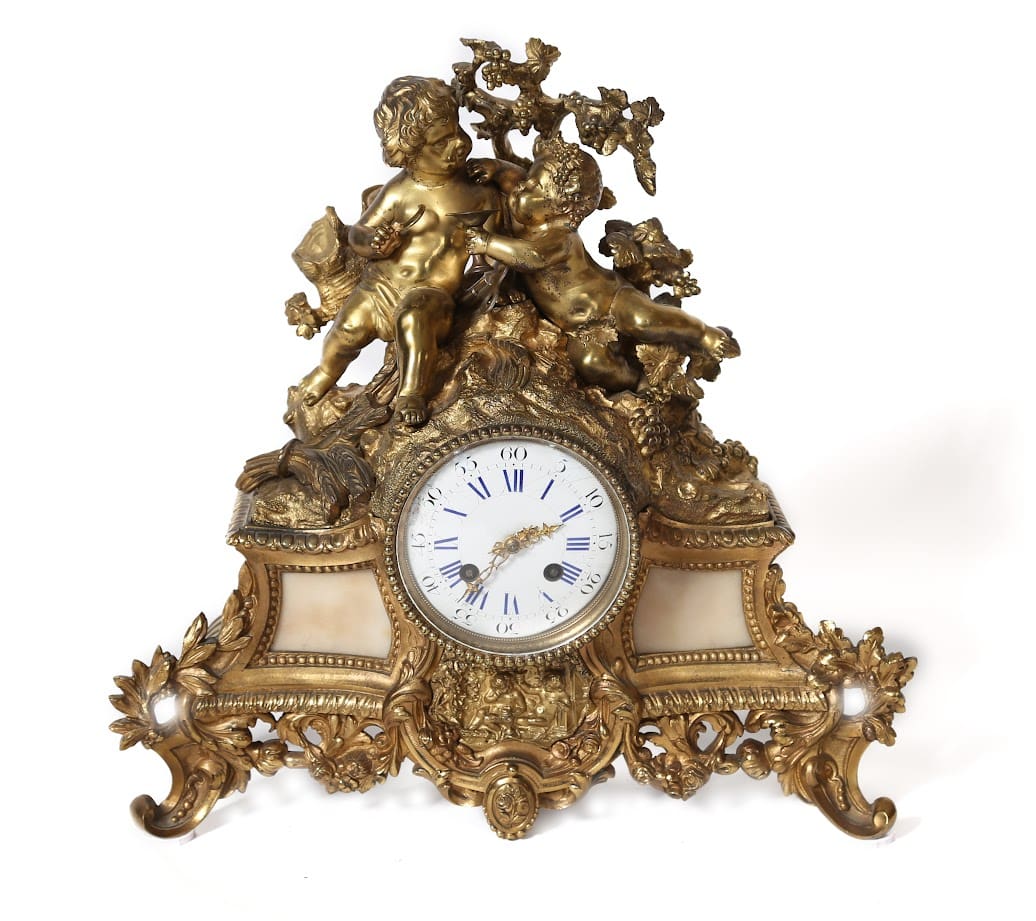Accents
Showing all 16 resultsSorted by latest
Antique Italian Grandfather clock with beautiful walnut inlaid woods
Antique Italian Grandfather clock with beautiful walnut inlaid woods
81 tall x 22.5 wide x 11.5 deep
3pcs Antique English porcelain clock with urn cobalt blue and white
3pcs Antique English porcelain clock with urn cobalt blue and white
Set of three Antique hand beaten Copper pieces
Set of three Antique hand beaten Copper pieces
Pair of Antique Silver-plated English candelabras
Pair of Antique Silver-plated English candelabras
19 tall x 16.5 wide x 6 x 6 base
Pair of hand carved Italian Onyx Pedestals 40.5 tall x 8.5 wide x 8.5 deep
Pair of hand carved Italian Onyx Pedestals 40.5 tall x 8.5 wide x 8.5 deep
Antique French Onyx and bronze ink well with 2 ink pots
Antique French Onyx and bronze ink well with 2 ink pots
8.5 tall 13.5 long x 8.5 deep
Japanese Champlevé vase, from the late Meiji period
Antique Japanese Champlevé vase 14.75 tall x 10.5 wide x 7 base
This striking piece is a Japanese Champlevé vase, from the late Meiji period (circa 1880–1910). It reflects the meticulous artistry and global appeal of Japanese metalwork at the height of its influence in both domestic and export markets.
Material: Gilded bronze or brass with champlevé enamel inlays.
Technique: The surface design is cast or engraved into the metal and filled with vivid enamel colors. This is different from cloisonné, where wires are used to form the enamel cells.
The upper band features mythical or Buddhist-influenced patterns, with floral and scrollwork motifs in rich turquoise, blue, red, and white enamel.
The central register showcases large chrysanthemum and lotus flowers, both sacred in East Asian art. These flowers are symbols of purity, renewal, and imperial heritage.
The handles, shaped like stylized dragon or chimera heads, suggest protective symbolism and may hint at Taoist or Shinto influences.
The geometric background texture adds depth and reflects the Japanese fondness for detail and surface richness.
Historical Significance: During the Meiji Restoration (1868–1912), Japan underwent rapid modernization and began actively trading with the West. This sparked a renaissance in decorative arts as Japanese artisans adapted traditional forms for foreign collectors. Champlevé enamelware became one of Japan’s luxury exports, admired in World’s Fairs and international exhibitions, especially in Europe and America. These pieces were often collected by aristocrats, diplomats, and wealthy merchants eager for “exotic” craftsmanship. As such, this vase is not only decorative but a symbol of cultural diplomacy. The fusion of Buddhist symbolism, imperial motifs, and meticulous craftsmanship reflects how Japan asserted its artistic identity in a rapidly globalizing world.
Antique Capodimonte hand painted bowl
Antique Capodimonte bowl 8.75 tall x 15 wide x 7 deep
This is a fine example of a Capodimonte porcelain bowl, crafted in Italy during the early 1900’s, drawing on Rococo Revival influences that mirror the opulence of the 18th century. The bowl features Intricately molded porcelain with scrolling rocaille edges, ornate acanthus handles, and gilded accents. Lavish hand-painted figural scenes, including cherubs, mythological figures, and romantic clouds, reminiscent of allegorical frescoes from the Baroque and Rococo periods. A relief portrait of a bearded classical deity (possibly Zeus or Neptune), connecting the piece to classical mythology.
The Capodimonte porcelain tradition began in 1743 under King Charles VII of Naples, with a royal factory established in the Capodimonte palace. The factory became renowned for its soft-paste porcelain, praised for its delicate finish and artistic richness. Although the original royal factory was short-lived, the Capodimonte name continued through 19th-century workshops in Naples and beyond, producing revivalist wares for collectors and the aristocracy.
This bowl, like many Capodimonte pieces of the Victorian and Belle Époque periods, was likely created for decorative and display purposes, emphasizing luxury and artistic heritage over utility. It captures the romanticism and ornamentation that defined much of the European decorative arts during the time. In essence, this Capodimonte bowl is not just a decorative item—it’s a tribute to classical art, myth, and 18th-century grandeur, brought forward into a later era of refined collecting.
Italian Capodimonte porcelain Tea set
Italian Capodimonte tea set 7.75 tall x 14.5 wide x 11 deep
This exquisite antique tea set is a classic example of Capodimonte porcelain, renowned for its elaborate design and fine craftsmanship. Originating in Naples, Italy, Capodimonte porcelain was first produced in the mid-18th century by the royal factory established under King Charles III of Bourbon. Inspired by Meissen porcelain from Germany, the Capodimonte factory became known for its richly detailed figurines, mythological scenes, and ornate decoration.
This particular tea set features hand-painted neoclassical scenes, inspired by Rococo and Baroque art, often depicting cherubs, gods, and pastoral vignettes. The gilded interiors and elegantly sculpted handles—shaped like swan necks or mythological beasts—reflect the opulence and romanticism typical of 19th to early 20th-century revival pieces.
The ornate base with lion masks and foliate motifs underscores its decorative purpose, as these sets were often displayed in salons as symbols of refinement and aristocratic taste. Capodimonte porcelain remains highly collectible, admired for its fusion of Italian artistry and courtly elegance.
German hand painted clock
This hand painted German Clock showcased the Rococo Revival style, popular in the 1800’s. its ornate shape, floral detailing, and gilt accents reflect the romantic elegance of the period. The Curved form, crackle glazed finish and delicate rose motifs are hallmarks of German decorative pieces, blending artistry with function in a truly timeless piece.
Antique French Onyx inkwell with 2 inkpots
This elegant Antique French inkwell is crafted from richly veined green onyx and ornate gilt bronze. It’s a fine example of 1800’s desk accessories in the Neoclassical style. Featuring 2 lidded inkwell pots and a central urn with draped garlands. It showcased the opulence and artistry typical of the Belle Epoque period.
Measures 8.5 tall 13.5 long x 8.5 deep
Dresden Bowl with hand painted applied flowers
Dresden Bowl 4.5 x 11.5 wide x 7 deep
This Dresden porcelain bowl features beautifully hand-modeled and painted applied flowers, 2 large handles perched on elegant legs. Rich in Rococo influence, it showcases the refined craftsmanship and floral artistry that Dresden porcelain is renowned for. Originating in the 18th century, Dresden porcelain was produced by skilled German artisans who decorated porcelain—often using blanks from nearby Meissen. By the late 19th and early 20th century, Dresden became famous for its elaborate floral designs, figural work, and romantic Rococo style, making pieces like this highly collectible. It measured 4.5 tall x 11.5 wide (handle to handle) x 7 deep
Dresden Porcelain Compote Bowl
Dresden porcelain compote 8 tall x 6.5 wide 5 base
This ornate Dresden porcelain compote features beautifully hand-modeled and painted applied flowers, delicate reticulated (pierced) rim work, and a gracefully scrolled pedestal base. Rich in Rococo influence, it showcases the refined craftsmanship and floral artistry that Dresden porcelain is renowned for.
Originating in the 18th century, Dresden porcelain was produced by skilled German artisans who decorated porcelain—often using blanks from nearby Meissen. By the late 19th and early 20th century, Dresden became famous for its elaborate floral designs, figural work, and romantic Rococo style, making pieces like this highly collectible.
French Sèvres urn with rams head handles hand -painted floral bouquets, gilt scrollwork and blue céleste glaze
This exquisite French Sèvres-style urn showcases the classic opulence of 19th-century decorative porcelain. The body is richly adorned with hand-painted floral bouquets in vivid colors, framed by ornate raised gilt scrollwork and bordered in the iconic bleu céleste (celestial blue) glaze—an instantly recognizable hallmark of Sèvres influence.
Striking gilt ram’s head handles enhance the neoclassical form, a design motif commonly associated with French Empire and Louis XVI aesthetics. The pedestal base and squared plinth further elevate its elegance, while the attention to detail throughout suggests it was crafted as a high-end decorative piece rather than for utilitarian use.
Measures 7.5 tall x 3.5 at the widest part. Hallmark with interlaced L’s
Founded in 1740, the Sèvres Porcelain Manufactory became one of Europe’s most prestigious, famed for its vivid colors, fine gilding, and royal patronage under Louis XV and Madame de Pompadour.
Italian Capodimonte Vase depicting the Garden of Eden
Italian Capodimonte Eden Vase 12.5 tall x 12 wide x 4 deep x 5.5 base
Capodimonte refers to a style of soft-paste porcelain, originating in Naples, Italy. It is known for its fine delicate, decorative figurines and tableware. The name “Capodimonte” translates to “head of the mountain” which makes sense as the Porcelain Factory, which was founded in 1743 by King Charles VII, was located on a hilltop overlooking Naples.
Typical themes in Capodimonte porcelain include Rococo Designs, floral motives and scenes of Neapolitan life.
The original factory from 1743 no longer exists, but Capodimonte porcelain is still produced today by various manufactures. Antique Capodimonte pieces are highly sort after collectables.
French Mantel Clock with marble inset and cherubs atop
French Mantel Clock with marble inset and cherubs atop 14 tall x 14.5 wide x 5 deep was $2,800 to $1,950
